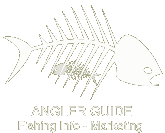 |  |
|
Navigation - Business - Great Lakes - Great Plains - Northeast - Northwest - Rocky Mountains - Southeast - Southwest - Technology - Trophy Catches
|
Fisheries managers say the sediment flowed into holding ponds at the South Fork Salmon trapping facility depriving the adult Chinook broodstock of oxygen. They also believe the sediment caused some mortality to the natural origin Chinook salmon swimming freely in the South Fork Salmon River.
Fish and Game and Nez Perce Tribe workers rushed tanker trucks to the trapping facility to save as many broodstock Chinook as they could after receiving word of the sediment flow. They were able to save approximately 200 adult Chinook, while an estimated 1,200 were lost.
“Broodstock losses will significantly impact the number of eggs for the IDFG McCall hatchery program and the Nez Perce Tribe’s Johnson Creek program in 2014,” said Anadromous Fisheries Coordinator Sam Sharr.
The greatest impact will be evident when this loss results in significantly fewer adult Chinook returning to the South Fork Salmon in 2018. Summer Chinook typically run in a four year cycle, returning to where their parents spawned four years earlier.
The surviving fish were transferred to the Rapid River Hatchery near Riggins where they will be spawned over the next several weeks. Managers are now working with tribal representatives in hopes of minimizing the impact to hatchery and natural origin Chinook salmon in the South Fork drainage.
“IDFG, the Nez Perce Tribe and other cooperators in the basin are planning alternative broodstock collection options to make up for some of the losses incurred at the South Fork Salmon trapping facility,” Sharr said.
Comments
«Back | News Home
| |||||||||||||||||||||||||||||||||||